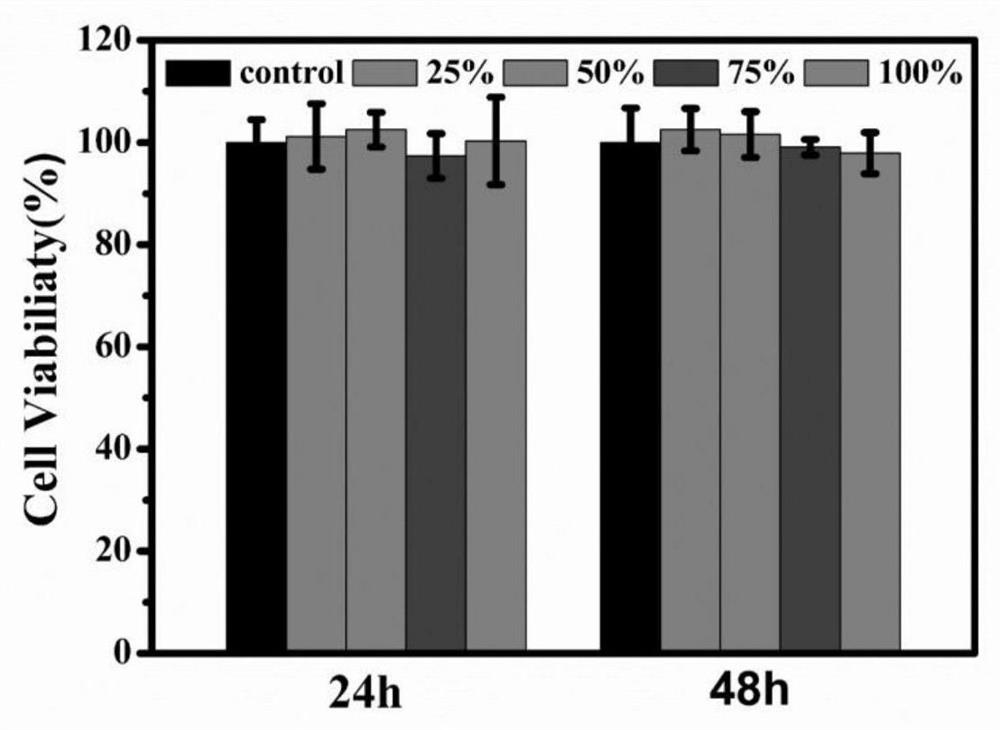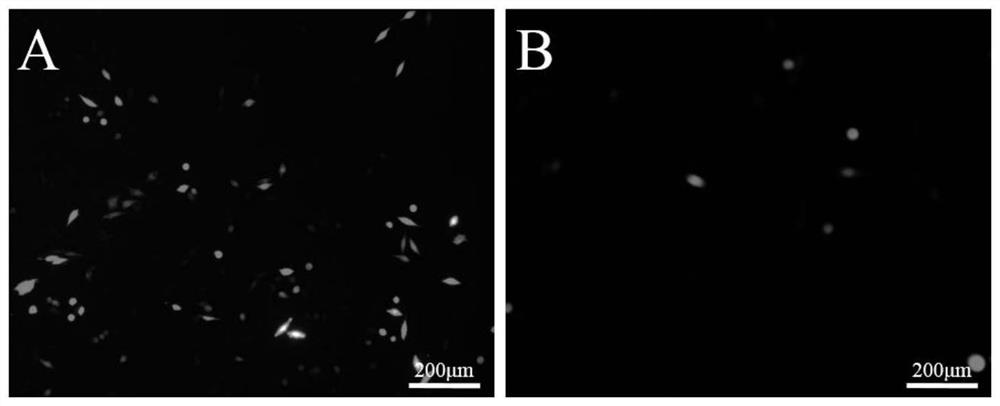Preparation method of zwitterionic hydrogel, crosslinking agent and polymer for postoperative anti-adhesion
A zwitterionic and hydrogel technology, which can be used in surgery, drug delivery, pharmaceutical formulations, etc., can solve the problems of inconvenient clinical operation of anti-adhesion materials, hidden dangers of biological safety, and poor anti-adhesion effects
- Summary
- Abstract
- Description
- Claims
- Application Information
AI Technical Summary
Problems solved by technology
Method used
Image
Examples
Embodiment 1
[0030] Embodiment 1: the preparation of zwitterionic cross-linking agent
[0031] (1) Dissolve N-methyldiethanolamine and anhydrous triethylamine in anhydrous dichloromethane at a molar ratio of 1:2, stir evenly in an ice-water bath, and then dissolve acryloyl chloride dissolved in dichloromethane Add it dropwise into the reaction vessel, and the molar ratio of N-methyldiethanolamine to acryloyl chloride is 1:2. The solution was stirred under an ice-water bath for 0.5 hours and then transferred to room temperature for 6 hours. The mixed product was filtered and rotary evaporated to obtain a crude product, which was then washed with acid, alkali and water in turn to obtain a yellow liquid.
[0032] (2) Dissolve the monomer obtained in step (1) in acetone, and stir evenly under an ice-water bath, then add dropwise the acetone solution containing 1,3-propane sultone, 1,3-propane sultone The molar ratio to the monomer obtained in step (1) is 1:1. After stirring evenly under an i...
Embodiment 2
[0033] Embodiment 2: the preparation of zwitterionic cross-linking agent
[0034] (1) Dissolve N-methyldiethanolamine and anhydrous triethylamine in anhydrous dichloromethane at a molar ratio of 1:2.4, stir evenly under an ice-water bath, and then dissolve the acryloyl chloride dissolved in dichloromethane one by one Add it dropwise into a three-necked flask, and the molar ratio of N-methyldiethanolamine to acryloyl chloride is 1:2.4. The solution was stirred for 2 hours in an ice-water bath and then transferred to room temperature for 24 hours. The mixed product was filtered and rotary evaporated to obtain a crude product, which was then washed with acid, alkali and water in turn to obtain a yellow liquid.
[0035] (2) Dissolve the monomer obtained in step (1) in acetone, and stir evenly under an ice-water bath, then add dropwise the acetone solution containing 1,3-propane sultone, 1,3-propane sultone The monomer molar ratio obtained with step (1) is 1:1.2. Stir evenly in ...
Embodiment 3
[0036] Embodiment 3: the preparation of zwitterionic cross-linking agent
[0037] (1) Dissolve N-methyldiethanolamine and anhydrous triethylamine in anhydrous dichloromethane at a molar ratio of 1:4, stir evenly under an ice-water bath, and then dissolve acryloyl chloride dissolved in dichloromethane one by one Add it dropwise into a three-necked flask, and the molar ratio of N-methyldiethanolamine to acryloyl chloride is 1:4. The solution was stirred evenly under an ice-water bath and then transferred to room temperature for 48 hours of reaction. The mixed product was filtered and rotary evaporated to obtain a crude product, which was then washed with acid, alkali and water in turn to obtain a yellow liquid.
[0038] (2) Dissolve the monomer obtained in step (1) in acetone, and stir evenly under an ice-water bath, then add dropwise the acetone solution containing 1,3-propane sultone, 1,3-propane sultone The monomer molar ratio obtained with step (1) is 1:2. Stir evenly in ...
PUM
 Login to View More
Login to View More Abstract
Description
Claims
Application Information
 Login to View More
Login to View More - Generate Ideas
- Intellectual Property
- Life Sciences
- Materials
- Tech Scout
- Unparalleled Data Quality
- Higher Quality Content
- 60% Fewer Hallucinations
Browse by: Latest US Patents, China's latest patents, Technical Efficacy Thesaurus, Application Domain, Technology Topic, Popular Technical Reports.
© 2025 PatSnap. All rights reserved.Legal|Privacy policy|Modern Slavery Act Transparency Statement|Sitemap|About US| Contact US: help@patsnap.com



